
Original Link: https://www.anandtech.com/show/2916
The CES 2010 Conclusion - SoCs, Motherboards, Cases & More
by Anand Lal Shimpi on January 9, 2010 5:44 PM EST- Posted in
- Trade Shows
Although CES will go on for on for another day, the show is done for me. I've spent much of the past few days meeting with everyone from motherboard manufacturers to ARM to GlobalFoundries.Some of what I've learned you've already read about, but much of it will appear in the weeks and months to come. I don't believe there's ever been a time quite as exciting as this.
I'll start with Intel - the makers of two out of the three most exciting things I saw at CES (Dell made the third if you're curious, but I can't explain why just yet). Intel's focus was obviously Arrandale and Clarkdale, its first CPU with on-package graphics:
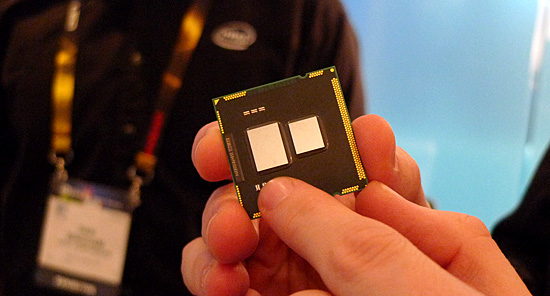
Arrandale - the larger die is the 45nm graphics core
Intel had a few demos of what you can do with the on-package 'dale graphics. The first example was Lenovo's new Clarkdale workstation that is actually AutoCAD certified using Intel's integrated graphics.
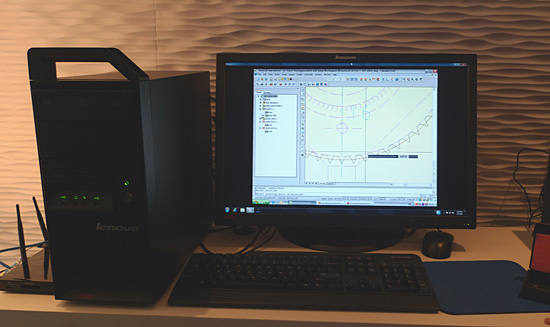
I gathered that this was a big event for Intel since no previous Intel integrated graphics could garner such a thing. I'm not sure if an AutoCAD user would want to use Intel integrated graphics, but perhaps it's finally sufficient? Either way Intel wouldn't have been able to come close to achieving this in the past. Like I mentioned in the Clarkdale review - Intel's HD Graphics is finally on par with competing AMD and NVIDIA solutions.
Cyberlink dropped by Intel and demonstrated PowerDVD 9 working with the new Blu-ray 3D spec, also on Clarkdale integrated graphics:
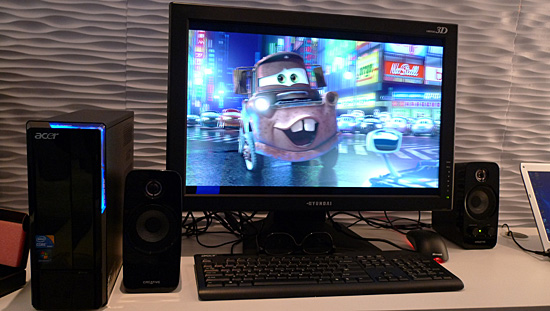
The demo worked in 3D but gave me a bit of a headache so I cut it short.
Imagination Technologies - Faster GPUs for SoCs
I met with Imagination Technologies, the makers of the GPU in everything from the iPhone 3GS to the Motorola Droid. They were showing off a 1.1GHz Samsung Cortex A8 SoC with an integrated PowerVR SGX 540:
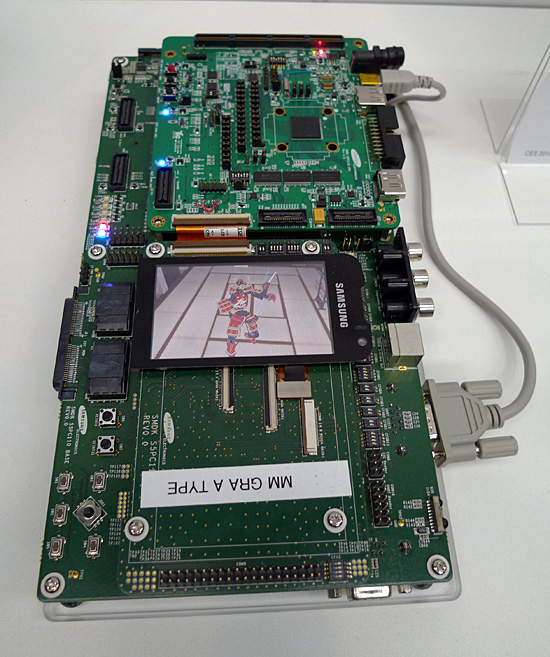
The demo isn't anything impressive, but the GPU should be in the Tegra 2 class of performance. Definitely higher than what's in the iPhone 3GS and Palm Pre today. The PowerVR SGX 540 is what is being used in TI's Cortex A9 SoCs, which appear to be the direct competitor to NVIDIA's Tegra 2. I spoke with Samsung about their 1.1GHz A8 SoC (now running at 1.2GHz actually), but I wasn't able to get a firm date on when we can expect A9 based silicon from them.
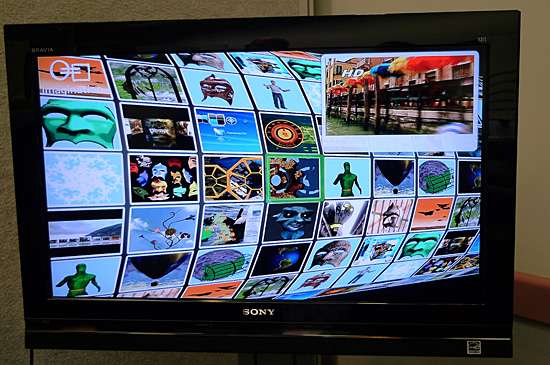
Our friends at Imagination put together a tech demo of a 3D user interface for TVs running on Intel's CE4100 SoC. The CE4100 was announced back at IDF and integrates an Atom core with PowerVR SGX graphics. Imagation believes that TVs or set-top boxes with chips like the CE4100 will use the GPU in a similar capacity to smartphones: for fancy UIs.
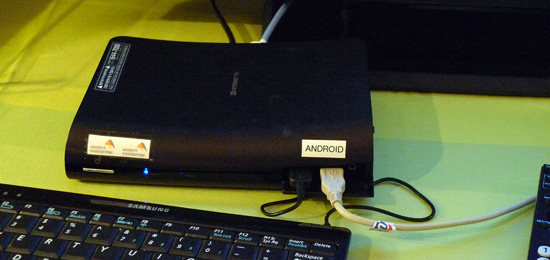
MIPS, another SoC vendor that does a large amount of business in the set-top box market showed off a number of Android devices for the home. Many of these were set-top boxes running Android that could do everything from video playback to watching over-the-air TV:
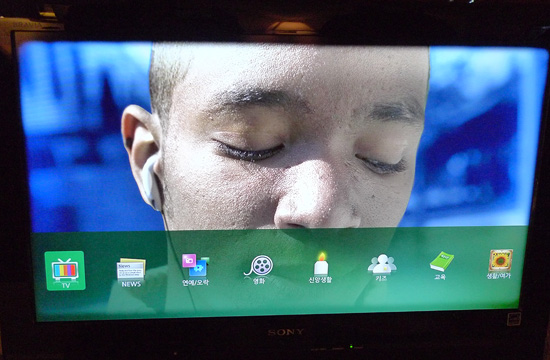
Unfortunately most cable providers in the US aren't as receptive to devices that can enable content consumption from sources other than cable TV, and thus I wouldn't expect to see much support for technology like this in the US just yet. MIPS has found the best success in Asia for these types of STBs so far.
NVIDIA - Fermi Up and Running, Tegra 2
NVIDIA finally showed off Fermi running in an Eyefinity-like 3-display setup:
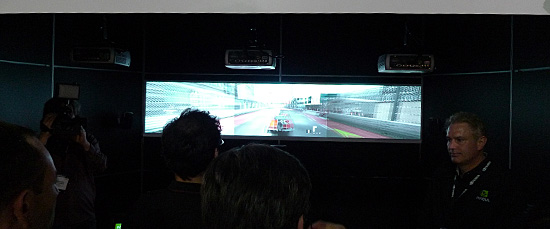
The demo also used NVIDIA's sterescopic 3D technology - 3D Vision. We're hearing that the rumors of a March release are accurate, but despite the delay Fermi is supposed to be very competitive (at least 20% faster than 5870?). The GeForce GTX 265 and 275 will stick around for the first half of the year as Fermi isn't expected to reach such low price/high volume at the start of its life.
Aside from Fermi, Tegra 2 tablets and netbooks were on display:
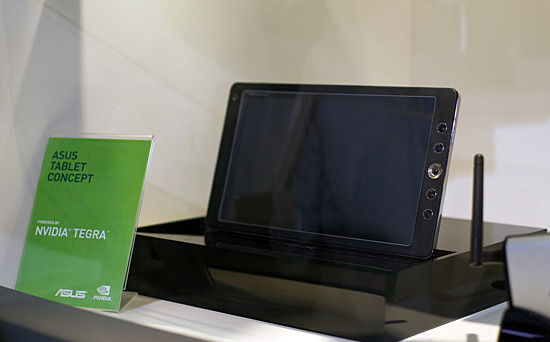
NVIDIA hopes that OEMs will be able to use Tegra 2 to create intuitive 3D user interfaces, but so far I haven't seen anything too exciting.
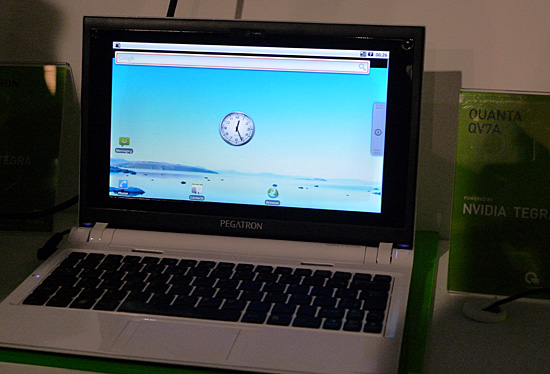
Pegatron's Tegra 2 based Smartbook
USB 3.0 and SATA 6Gbps on Motherboards in 2010
Both ASUS and Gigabyte are taking USB 3.0 and 6Gbps SATA seriously. Gigabyte uses two modifiers to indicate when a board supports USB3 or 6Gbps SATA:
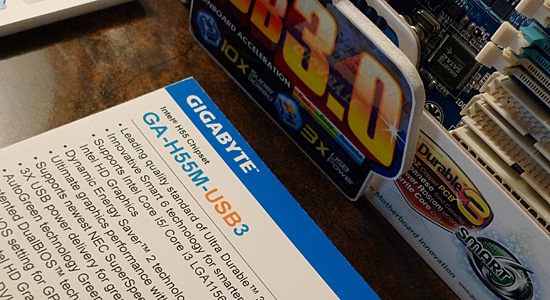
If the product name has a "USB3" in it, then it will support USB 3.0 via NEC's controller. It's the best we can get until we get integrated chipset support. If you want USB 3.0 and6Gbps SATA you need to look for the "A" in the model name:
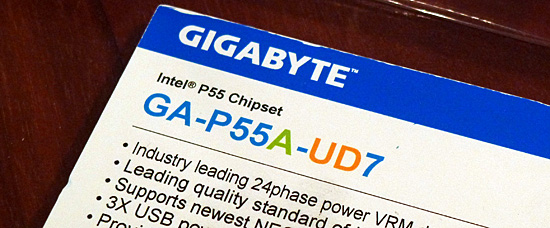
The "A" denotes support for both next-gen standards. Unfortunately there are no H5x boards with an "A" just yet:
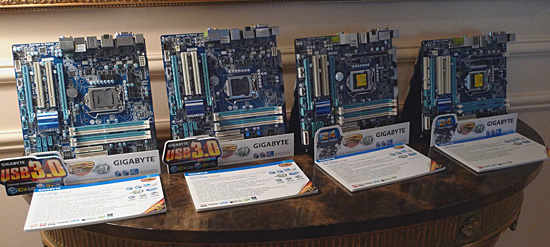
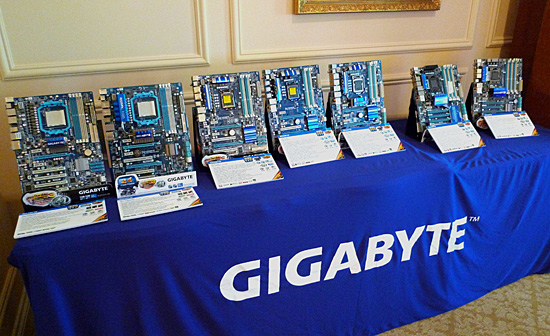
The cheapest you can get an "A" board from Gigabyte is approximately $140 - $150 for a P55A-UD3. If you just want USB 3.0 the entry price is closer to $120. MSI takes a different approach to the situation and doesn't believe that USB 3/SATA 6Gbps need to be on every motherboard and thus reserves the feature combo for high end boards only. Personally I believe two devices are about to change that.
First is OCZ's USB 3.0 external SSD:
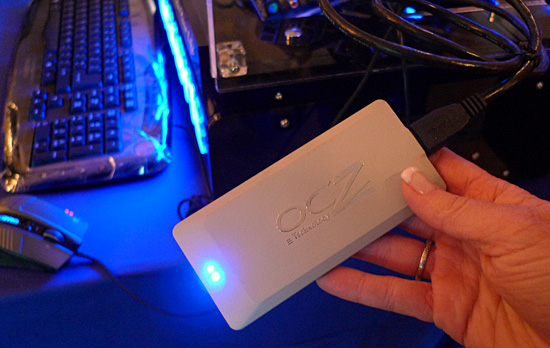
This little thing is basically an Indilinx MLC SSD with a SATA-to-USB 3.0 controller. You can expect to see tons of clones in the coming months. Not to mention the first wave of USB 3.0 thumbdrives.
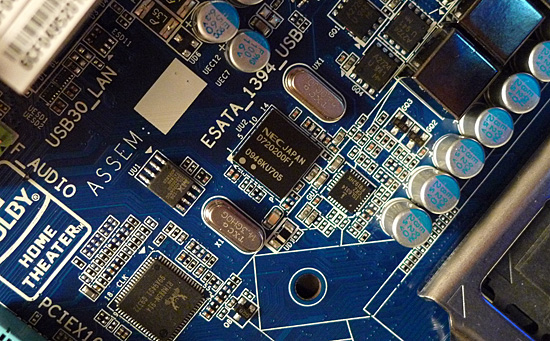
NEC's USB 3.0 controller
Next is Marvell's 6Gbps SSD controller, which is used in the Micron/Crucial ReadSSD C300:
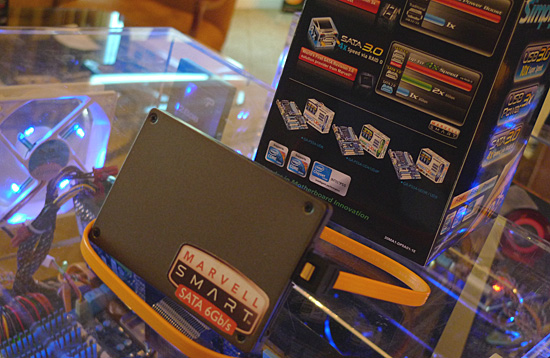
The combination of the two I believe will make USB 3.0 and SATA 6Gbps important far sooner than they would otherwise be.
ASUS and MSI Show AMD 8-series Motherboards
ASUS had its first AMD 890 based motherboard on display:
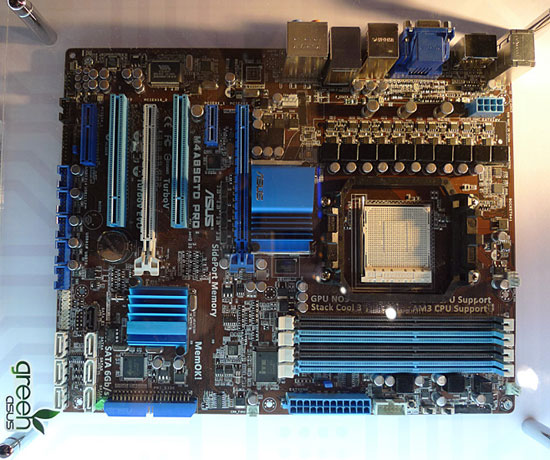
The 8-series of chipsets are due out sometime in the first half of the year and intend to compete with Clarkdale's integrated graphics in a major way. MSI also showed us its AMD 890FX motherboard:
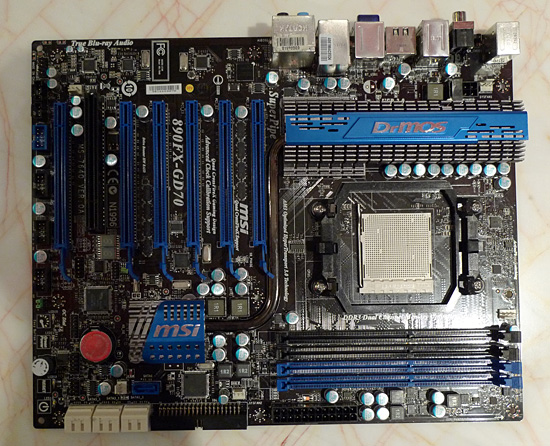
Unlike Intel's 2010 chipsets, AMD's 890FX is expected to include native SATA 6Gbps support. There won't be any native USB 3.0 unfortunately. Motherboard manufacturers will keep using NEC's USB 3.0 controller.
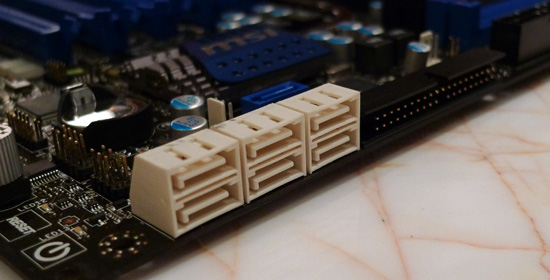
AMD keeps sending us emails reminding us that while Clarkdale has improved Intel's integrated graphics performance the 8-series is right around the corner. Presumably that means we can expect better IGP performance from it. I wonder how much...
Texas Instruments Pushes SoCs Even Faster
A huge player in the SoC market, TI is found in the Palm Pre and Motorola Droid. The OMAP 3430 is the current top of the line but TI just introduced the OMAP 3630:
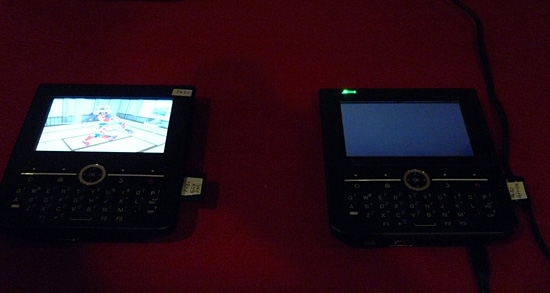
The 3630 is a 45nm shrink of the 3430 and runs the Cortex A8 at 1GHz. The SoC has a 32-bit 166MHz LPDDR1 memory interface, up from 140MHz in the 3430. TI believes it's faster than Qualcomm's Snapdragon thanks to a faster memory bus interface, but Qualcomm doesn't appear to have any public info on that.
I asked TI about their Tegra 2 competitor - the OMAP 4 series. They didn't have any public demos of OMAP 4 but TI has opted to go with a very large 1MB L2 for the Cortex A9s and has a 800MHz 32-bit memory interface. The cache and memory bus should result in a very high performance solution. Keep an eye out for it.
TI also had their eReader platform on display:
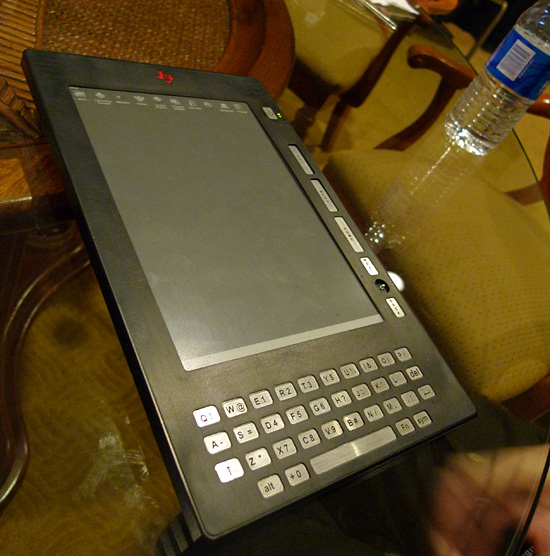
Unlike Marvell's eReader SoC, TI doesn't integrate an EPD controller into its SoC - instead it drives the e-ink display in software. The performance seemed at least as good as the Kindle 2, but TI implied that it would offer better battery life than anything on the market today. The SoC is TI's OMAP 3621, a 45nm Cortex A8 based solution running at 800MHz.
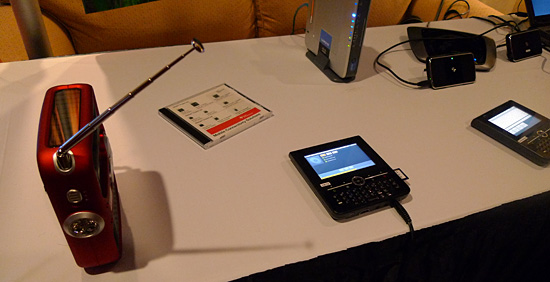
OMAP sending audio over FM to a radio
The other thing that TI's eReader platform offers is TI's wireless solution which has integrated Bluetooth, WiFi and FM transmitter. The latter lets you do text-to-speech and play it over your car speakers.
Antec's New mini-ITX and ATX Cases
Antec had a couple of mini-ITX cases on display, both at the prototype stage. The first is a mini tower with an external 90W DC power adapter:
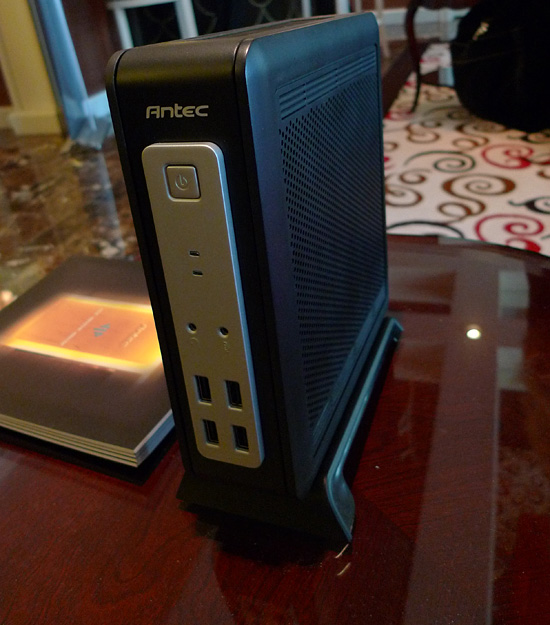
The second is a rack mountable mini-ITX case:
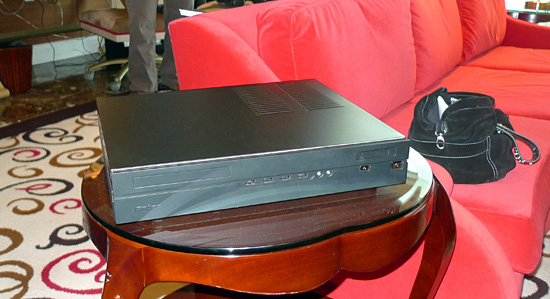
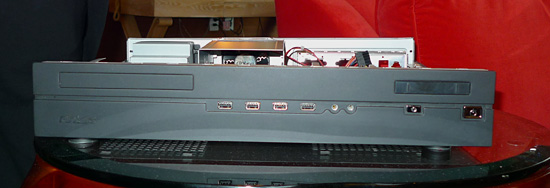
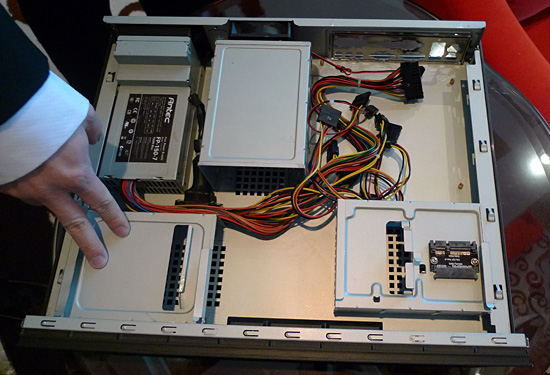
We can expect to see both before the end of 2010. Mini ITX is growing in popularity thanks to a steady flow of good motherboards. Clarkdale H5x mini-ITX boards should be arriving soon as well.
Antec also has a handful of new ATX cases. First up is Antec's LanBoy:
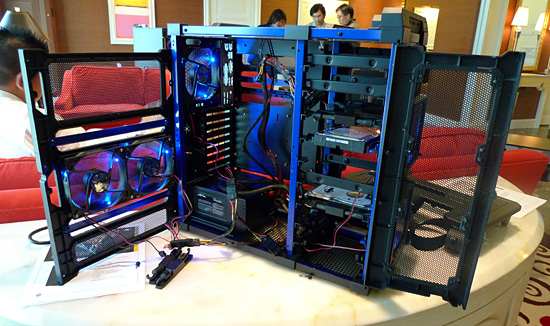
It's skeleton-inspired but a bit more normal looking. The PSU can be moved from the bottom to the top of the case. The drive bays can accept drives pointed in any of three directions. There are two 2.5" bays at the bottom of the case.
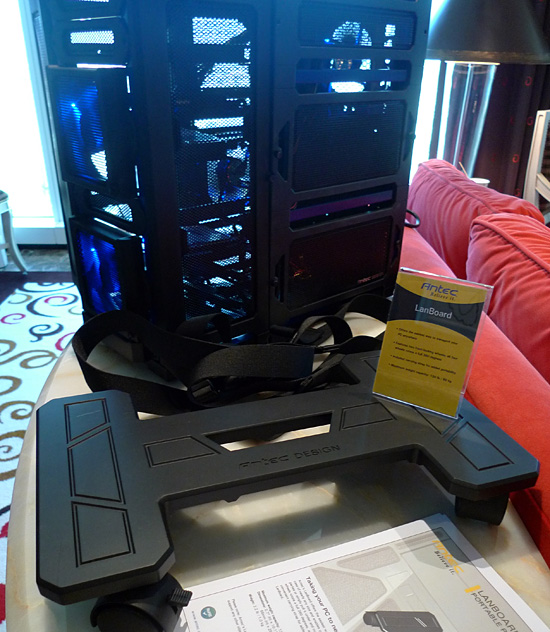
Antec also offers a LanBoard accessory for rolling your case around. It comes with straps to carry your case/LanBoard around with.
Antec's DF-series cases were also new for CES:
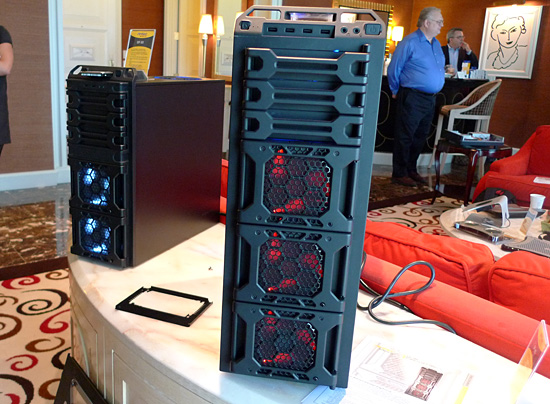
The DF-85 is based on the Antec 1200 but with a different look. The three front mounted fans are removable/relocatable:
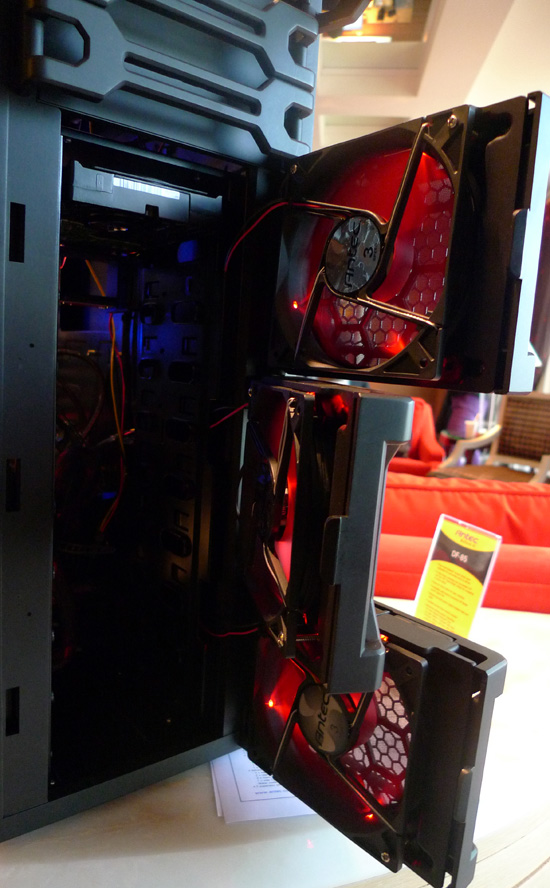
Behind the fans are two pairs of hot-swap 3.5" SATA backplanes.
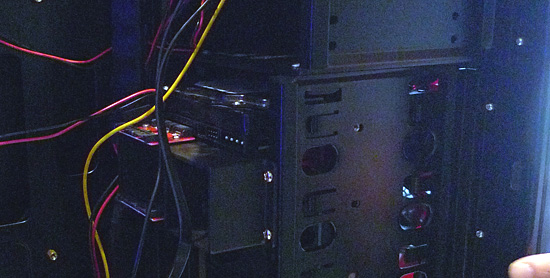
There's also a hot-swap 2.5" bay at the top of the case:
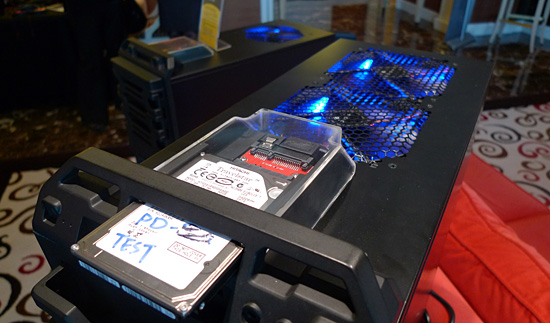
Antec couldn't confirm what SSDs they'd tested the bay with. I'd wait to see if there are any issues with the SATA backplane from a compatibility standpoint.
The fan filters are easily removable as well:
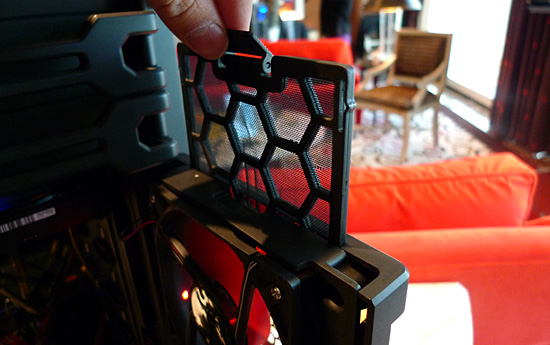
The smaller DF-35 doesn't come with any hot-swap bays:
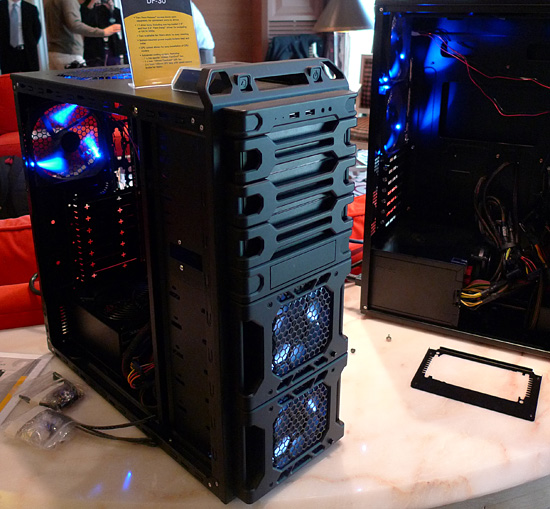
ASUS - The Eee Keyboard Will Ship in 2010
ASUS has made the transistion from just a motherboard manufacturer to much more. A lot of that was thanks to the Eee PC line. With the goal of being a top-3 notebook manufacturer by 2011 ASUS had a lot of notebooks on display at CES. The ASUS Eee PC 1201T is based on AMD's Neo MV40:
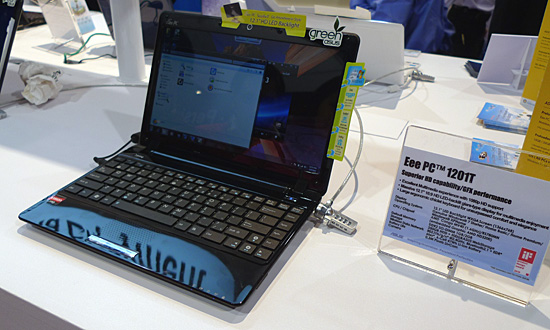
The system will be shipping in late Q1.
The Eee Keyboard is finally shipping this year:
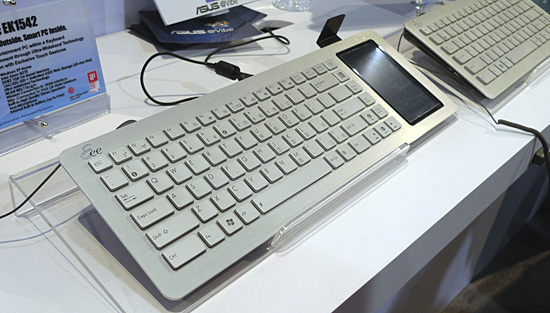
With an integrated Atom-based system, the keyboard is your PC. The integrated display runs Windows but can run a smartphone-like shell on top of Explorer:
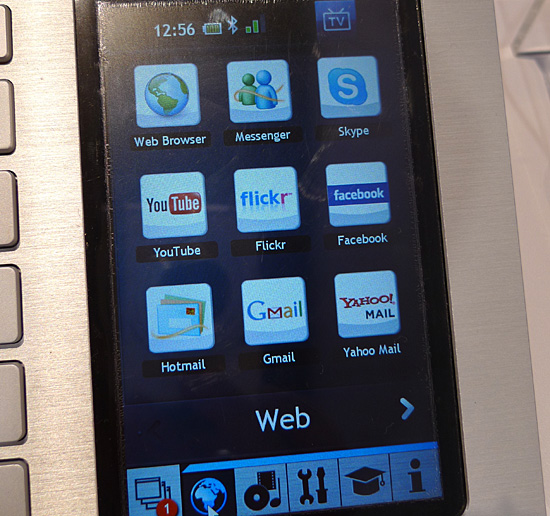 .
.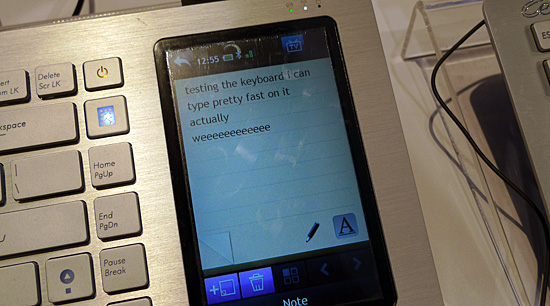
The Eee Keyboard works well as a keyboard itself, but you won't be able to use the keyboard on another PC. It can only drive the integrated computer. For $599 ASUS will bundle the Eee Keyboard with an Ultra Wide Band wireless video streaming box:
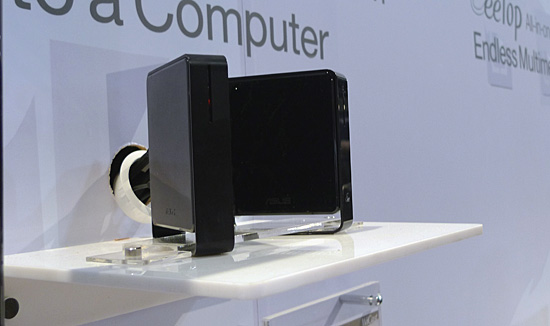
You'll be able to use the keyboard and wirelessly stream its desktop to your HDMI equipped display. In this mode you can use the touchscreen on the right as a trackpad.
Final Words
That's it for me at CES 2010. Ryan is still running around with meetings, but for me I'm off to finish our Core i3 review and play around with some new SSDs.







